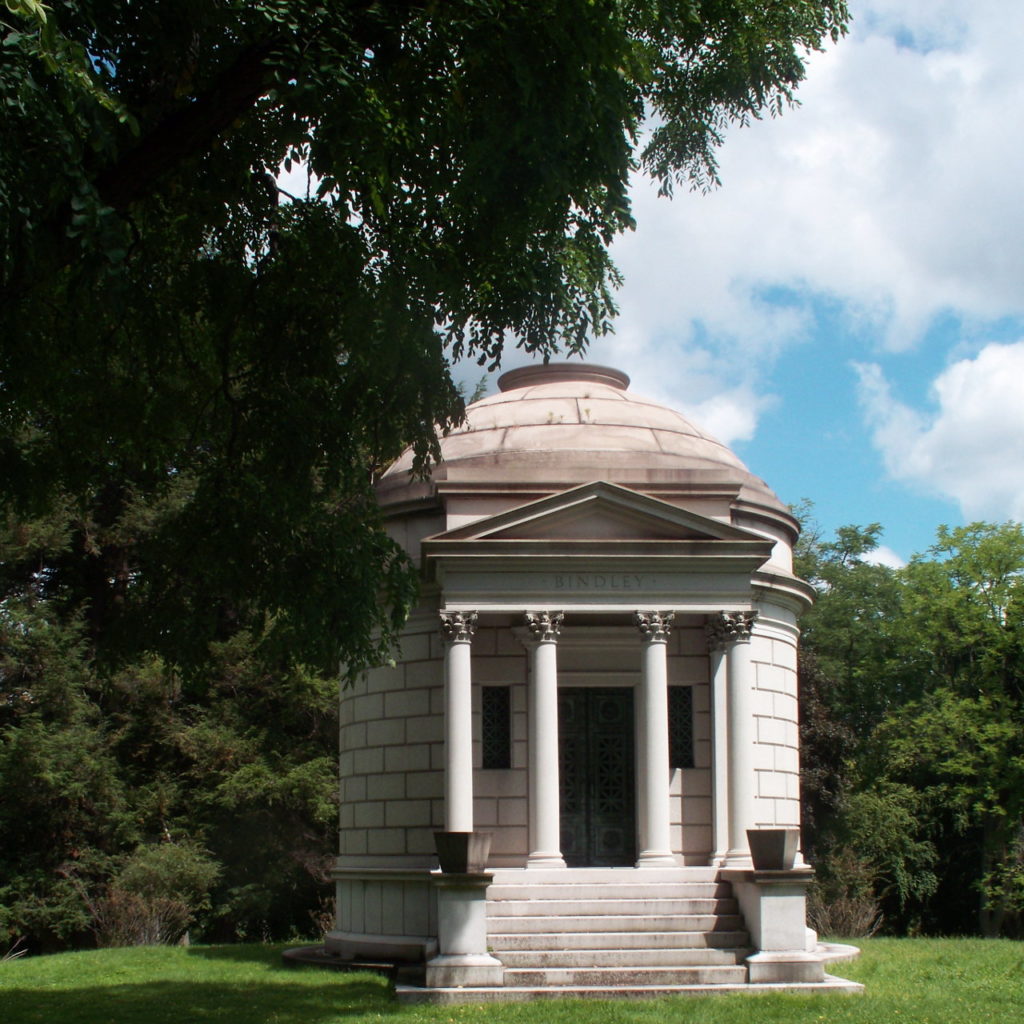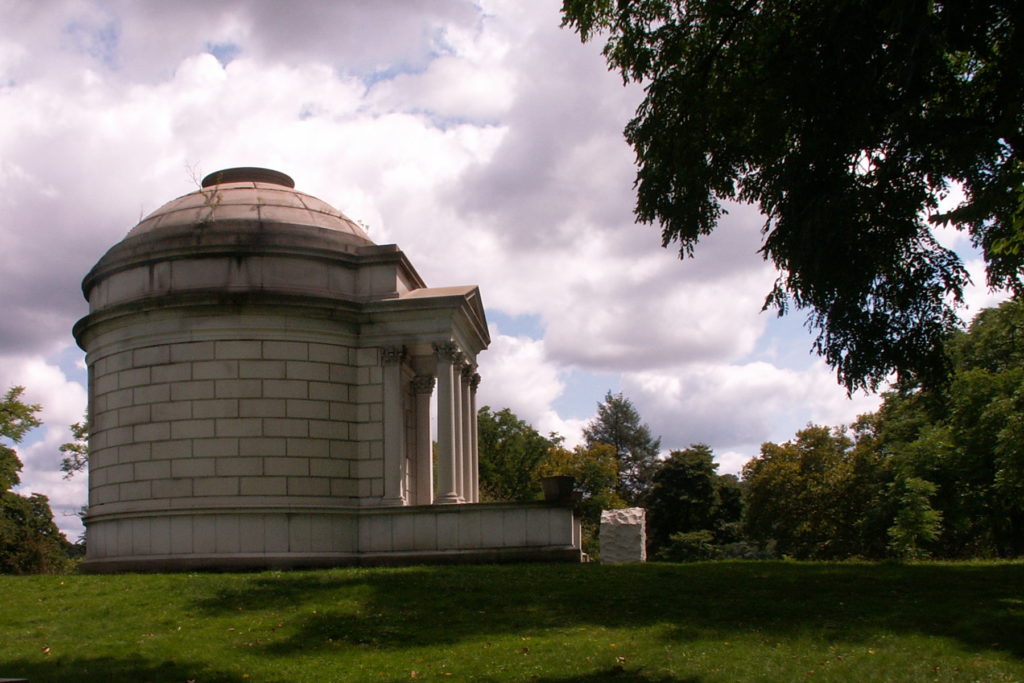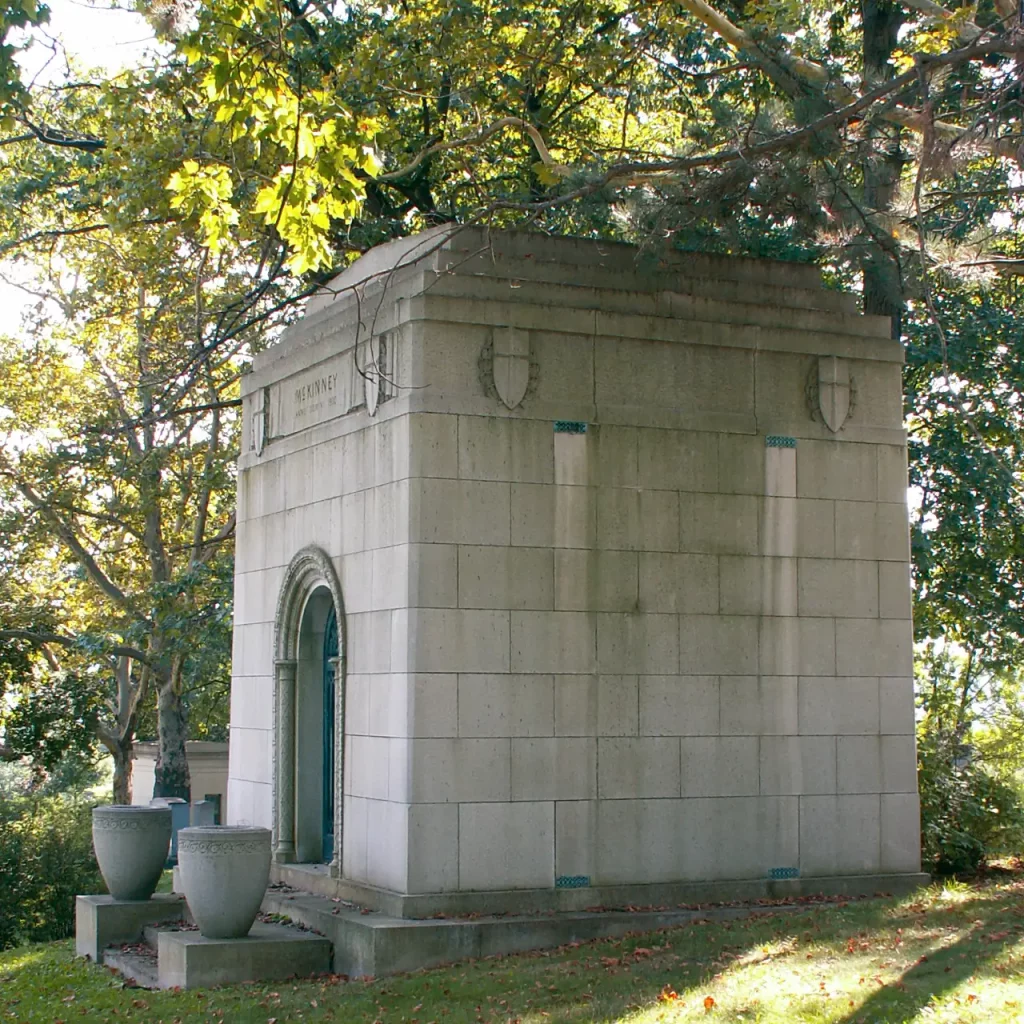

One is tempted to describe this peculiar construction as “Doric Romanesque.” The rusticated stone and ponderous style cry out for Romanesque details, but instead we get smooth Doric columns and a smooth arch that seems to belong to another structure altogether. In fact, Father Pitt, who seldom passes a negative judgment on anyone’s mausoleum, is compelled by sheer honesty to say that he does not regard this design as a success. It is a cacophony rather than a harmony of disparate ideas. The bronze doors, however, are splendid, and no one can take that away from them.

















